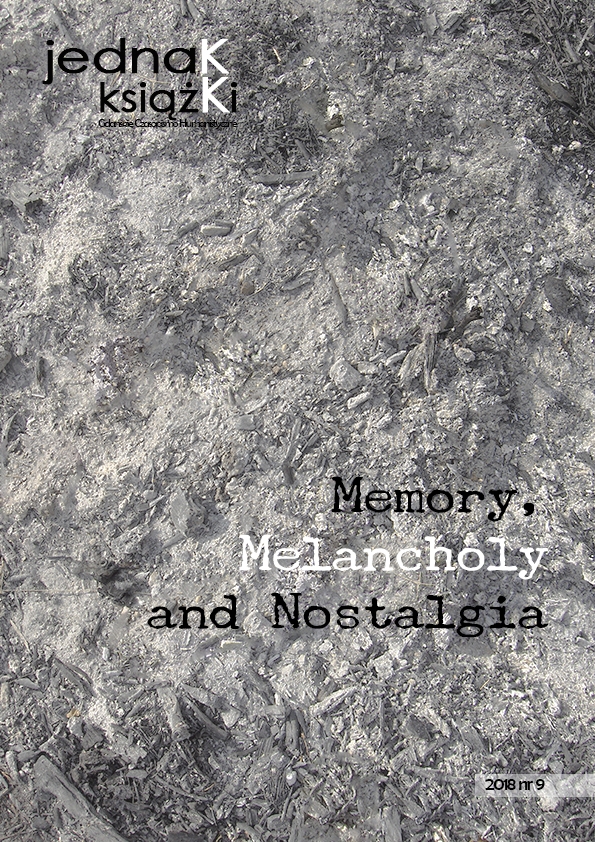The Memory Places and Color: The Methods and Practices of Color Use in Ethnographic Research
DOI:
https://doi.org/10.26881/jk.2018.9.16Słowa kluczowe:
color tablets, Kobayashi, ethnographic interview, memory place, International Izmir FestivalAbstrakt
Nowadays art festivals engage more to organize their events in unusual places. Either for the sake of city branding or a pure cultural memory action, a performance might be set in a forgotten memory place. The place which is distinguished sharply by a comfortable concert hall becomes one of the actors of the event and the participant questions a past that s/he hasn’t been strongly connected. Thus, the individual is not only aroused by the performance itself and the information in the booklets but also physical environment has an affect. This article aims to tackle the contribution of color as an instrument of data collection in qualitative research. By using color tablets inspired by the colorist Kobayashi the colors are tested firstly as a visual to learn how they make sense in Izmir during International Izmir Festival. Secondly, they are questioned how the participants embed colors’ senses to the memory places where they attended to the concerts. The research process indicates that the experience of a concert might not be visually powerful enough to associate memory places with the colors. However, the technique of color tablets becomes prompting object which support the dialogue construction between the fieldworker and informant. Thus, as an instrument for evocation and conversation color tablets become interactive objects for remembering of the festival experience and it mediates the social roles of the informants and the fieldworker.
Downloads
Bibliografia
Behar, Ruth. 1996. The Vulnerable Observer. In: The Vulnerable Observer. 1-33. Boston: Beacon Press.
Bilgin, Nuri. 2013. Tarih ve Kolektif BellekIstanbul: Bağlam Press
Bilgin, Nuri. 2011. Sosyal Düşüncede Kent Kimliği’ (City Identity in Social Thought) İdealkentJournal Vol. 3: 20-47
Chereni, Admire. 2014. Positionality and Collaboration During Fieldwork: Insights From Research With Co-Nationals Living Abroadin Forum: Qualitative Research, Vol 15, No. 3
Clifford, James and Marcus, George E., ed. 1986. Writing Culture: The Poetics and Politics of Ethnography. University of California Press
Clifford, James. 1986. On Ethnographic Allegory. In: Writing Culture: The Poetics and Politics of Ethnography, 98-121. University of California Press
Dikomitis, Lisa. 2012. Cyprus and Its Places of Desire: Cultures of Displacement among Greek and Turkish Cypriot Refugees. London: I.B. Taurus
Dimova Rozita. 2012. “The Ohrid Festival and Political Performativity in the Contemporary Republic of Macedonia”. Journal of Balkan and Near Eastern Studies Vol. 14 (2): 229-244.
Geertz Clifford. 1973. Thick Description: Toward an Interpretive Theory of Culture. In: The Interpretation of Culture. New York: Basic Books
Gibson David. 2009. The Wayfinding Handbook, Information Design for Public Places. New York: Princeton Architectural Press
Gobo, Giampietro. 2008. Doing Ethnography. L.A.: Sage Publications
Göregenli, Melek. 2010. Çevre Psikolojisi: İnsan Mekan İlişkileri. Istanbul: Istanbul Bilgi University Press
Grafik Tasarım (graphic design magazine), Volume 28. 2009/01, “Bilgilendirme Tasarımı” (Orientation, Wayfinding and Sign System) / Information Design). 68-95
Halbwachs, Maurice. 1950. The Collective Memory. Harper & Row
Kobayashi, Shigenobou. 1998. Colorist: A Practical Handbook for Personal and Professional Use. Tokyo: Kodansha International Ltd.
Krause, Jim. 2002. Colour Index: Over 1100 Colour Combinations, CMYK and RGB Formulas, for Print and Web Media. United Kingdom: HOW Design Books.
McCracken, Grant. 1988. The Long Interview. Newbury Park, London, New Delhi: Sage Publications
Okely Judith. 1996. Own or Other Culture. London and New York: Routledge
Pastoureau, Michel and Simonnet, Dominique. 2005. Le Petit Livre des Couleurs. Paris: Editions du Panama
Pinxten, Rik. 1997. When the Day Breaks: Essays in Anthropology and Philosophy. Frankfurt am Main: Peter Lang

 Uniwersyteckie Czasopisma Naukowe
Uniwersyteckie Czasopisma Naukowe





